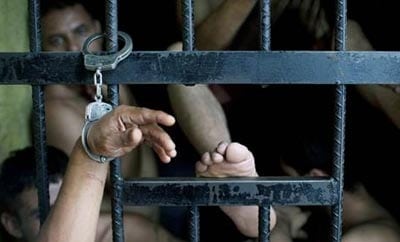According to a new report on hemispheric security released by the Organization of American States (OAS) El Salvador, Bolivia and Haiti have the most overcrowded prisons in the hemisphere.
On October 1, the OAS Hemispheric Observatory released the 2012 Report on Citizen Security in the Americas (pdf), a comprehensive analysis of government data on crime and violence in the hemisphere.
One of the variables studied in the report is the issue of overcrowding, an unfortunate feature of penal systems across Latin America. The issue has attracted much attention recently in Venezuela, Mexico and Honduras, which have all seen prison riots with multiple casualties, blamed at least in part on the lack of adequate space for inmates.
Surprisingly, however, none of these countries are among the top three Latin American nations with the most crowded prisons. According to the data for 32 countries in the region, at the top of the list is El Salvador (whose prisons are filled at 299 percent their official capacity), Bolivia (233 percent) and Haiti (218 percent).
InSight Crime Analysis
The reasons for prison overcrowding are complex, with budget restraints, tough anti-gang laws and high use of pre-trial detention contributing to the problem in countries across the region. All three conditions are in place in El Salvador, where decades of neglect have made the country’s prisons recruiting grounds and operation centers for street gangs.
While the report’s figures are self-reported by OAS member states, and are thus subject to tampering for political reasons, they allow for interesting comparisons and suggest that overcrowding, in itself, may not be directly linked to prison violence.
For instance, while official figures for 2010 cite Mexico’s prisons as being occupied at 122 percent of their official capacity, the prison occupancy rate in the Dominican Republic (where the penitentiary system has gained praise as a model for others in the region) for the same year was 183 percent.

